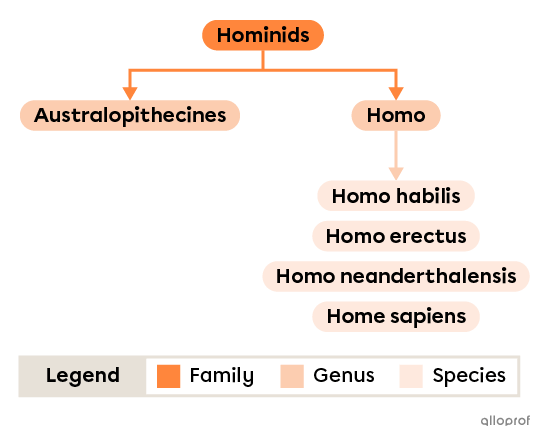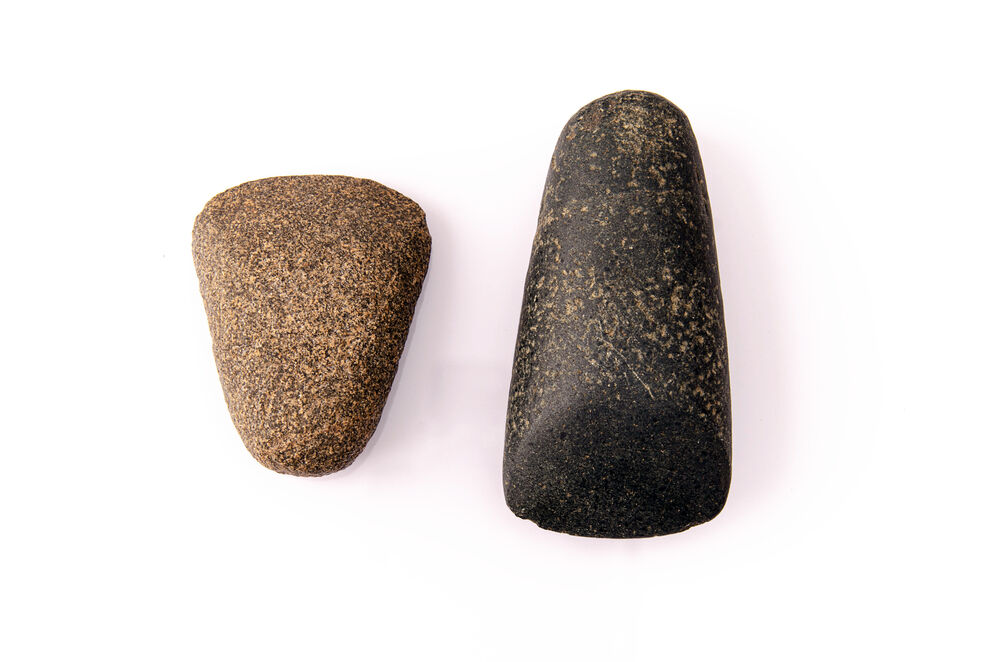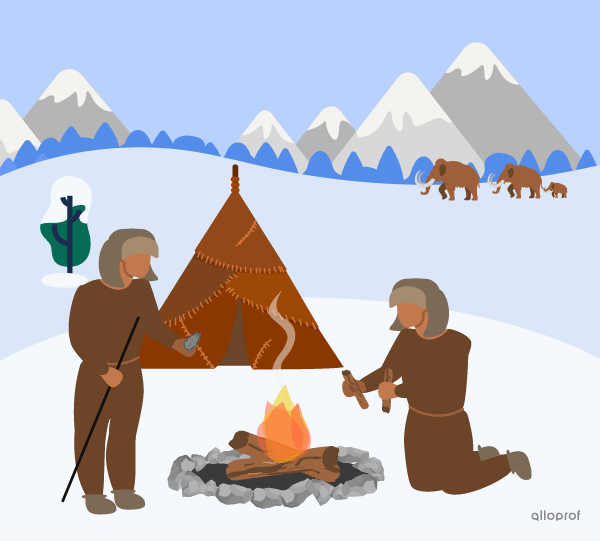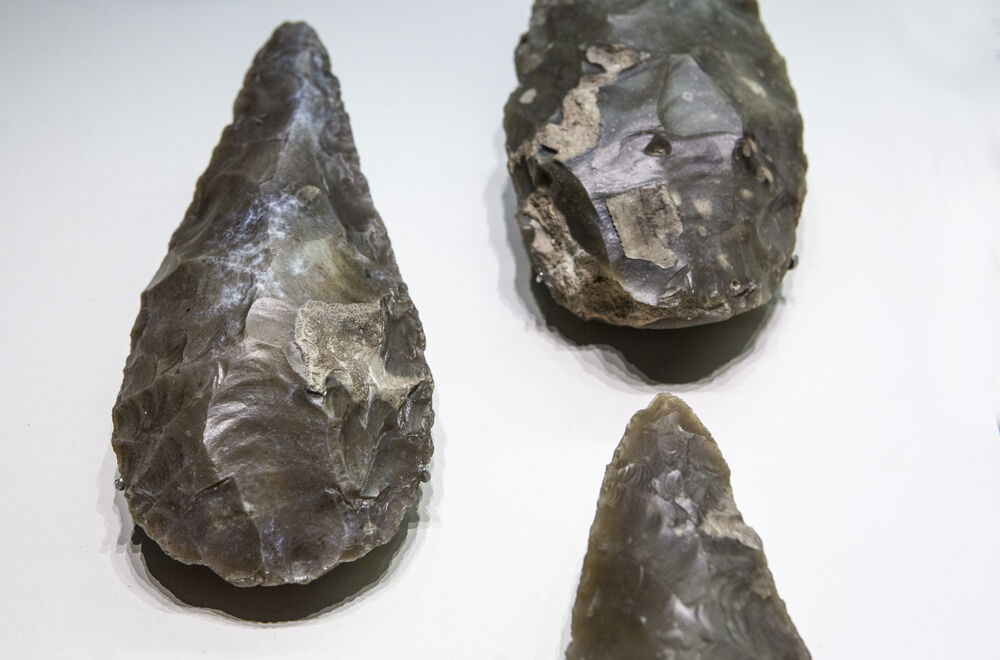The Paleolithic Age is the longest period of Prehistory, an era that begins with the appearance of the first humans and ends with the invention of writing. Discover how nomadic populations, also called hunter-gatherers, managed to adapt to difficult living conditions and survive by hunting and gathering, and how sedentarization changed their way of life.
History began in 3300 BC, when writing first appeared. The period before this is called prehistory.
Prehistory begins with the appearance of the first humans. It’s difficult to determine exactly when the first humans appeared, since it happened millions of years ago.
In this concept sheet, we consider that the Prehistory period began 2.5 million years ago and ended in 3300 BC with the invention of writing.

Experts do not all agree on exactly when the first humans appeared. Some believe they first appeared 7 million years ago, while others date their appearance to around 2.5 million years ago.

The first humans appeared in Africa several million years ago. Our most ancient ancestors are the hominids. The very first hominids, like the australopithecines, appeared around 7 million years ago. Our knowledge of their existence comes from fossils.
A new family of hominids appeared 2.5 million years ago, the genus Homo. They had more developed brains, walked on two feet and had thumbs that allowed them to grasp objects.
Several species of this genus succeeded one and another over time, such as Homo habilis, Homo erectus and Homo neanderthalensis.
Our species, Homo sapiens, appeared around 200 000 years ago and succeeded in populating every continent. Homo sapiens are the only species of the Homo genus to have survived.

The term hominid refers to the family of primates to which human beings belong. Australopithecines and members of the Homo genus belong to this family.
Prehistory is divided into two historical periods:
- The Paleolithic period, from 2 500 000 BC to 10 000 BC
- The Neolithic period, from 10 000 BC to 3300 BC
Prehistory is sometimes referred to as the Stone Age, since human beings mainly used tools made of stone. The way in which stone tools were made is what distinguishes the two periods.
In the Paleolithic period, tools were made by carving or breaking stone to create sharp edges. This period is also known as the Old Stone Age.
The Neolithic period is also known as the New Stone Age, since it was during this period that humans began polishing stone to make tools stronger and more efficient.

Source: Ique Perez, Shutterstock.com
The Paleolithic period began around 2.5 million years ago and ended 10 000 years ago. It is the longer of the two prehistoric periods.
Over these hundreds of thousands of years, humans had to learn to survive in very difficult conditions. At the end of the Paleolithic period, there was a glacial period. The climate was very cold and it was very difficult to find food.

Humans of the Paleolithic period were nomadic, meaning they were constantly travelling over long distances to hunt and gather food. This is why we refer to them as hunter-gatherers.
Nomadic populations could stay in the same place for just a few days, or for several months at a time. As soon as there was no more food to gather or animals to hunt, the group moved on. Some groups followed herds of animals.
Since food supplies were very limited, they only formed small groups. This also made it easier to travel.
They had to build shelters to protect themselves from bad weather and predators. However, because they had to move frequently, their dwellings had to be temporary or transportable. Some groups took shelter in caves, while others built huts from branches and animal skins.
While humans were nomadic in the Paleolithic period, they became sedentary during the Neolithic period. As the planet’s climate warmed, agriculture and livestock farming became possible. Thanks to these innovations, human beings gradually began to settle in one place. Sedentarization marks the transition between the end of the Paleolithic period and the beginning of the Neolithic period.
The term sedentary refers to a person or group who settles permanently in a territory.
To access the rest of the sedentarisation unit, you can consult the following concept sheets.
